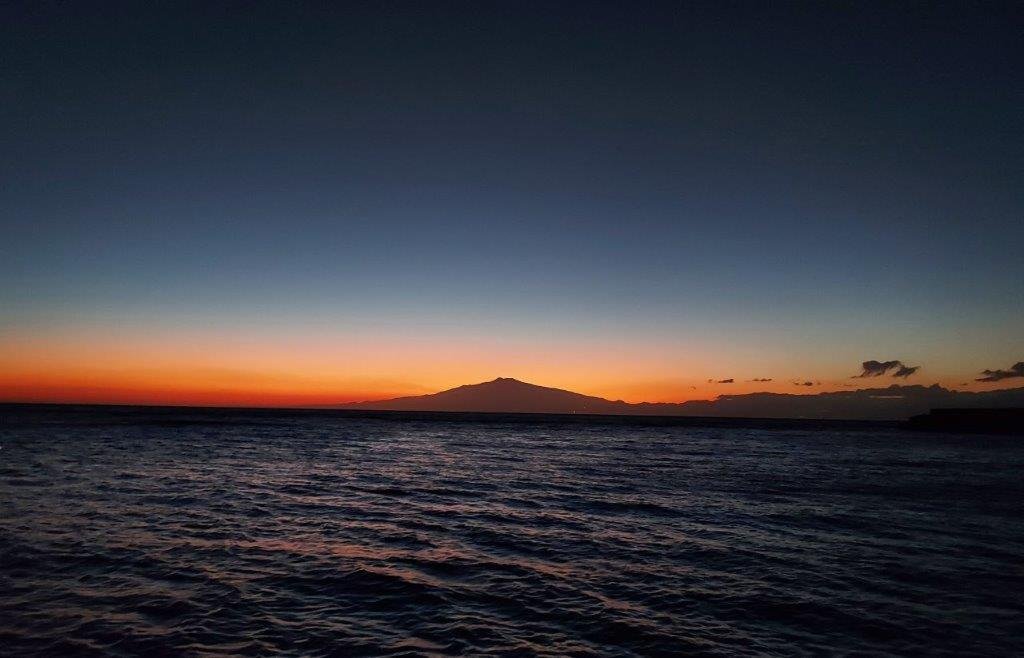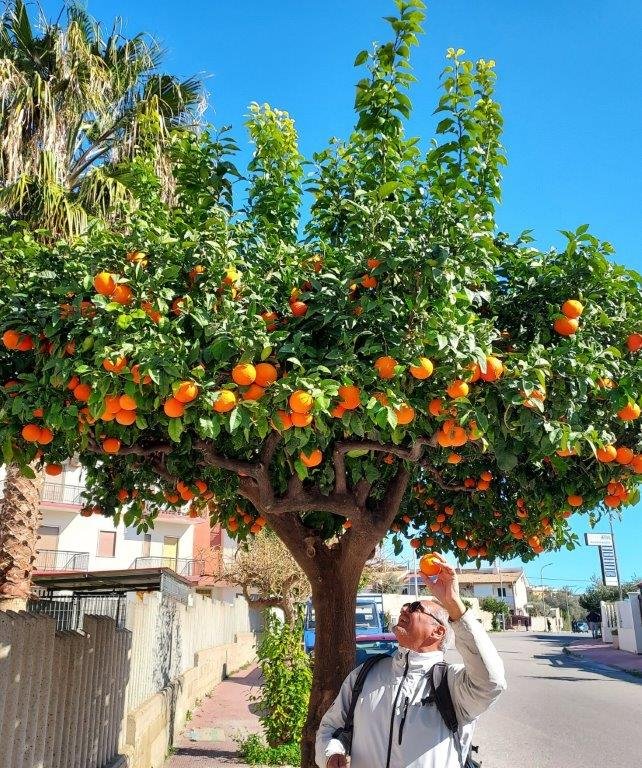After a nice time in Sicily, we made the crossing back to the mainland of Italy.

We took the nice harbor beneath volcano Etna as our starting point: one more time we could look at the snow on top of the Etna and then start sailing again, away from the coast into open water:

The sail was about 45 miles, which is 9 hours and we wanted to arrive at daylight, because there was no harbor close by, so we would have to anchor.


We made it to the coast just before it started to become dark and we found a nice sheltered anchor spot. Although mountain Etna was further away, we still could see the mountain from our anchor place.

The next day would be a long sail again, to the next harbor in this part of Italy that is called Calabria. We would stay there for 3 days. We stayed close to the coastline, to enjoy the landscape of Calabria which has a nice mountain range.

We think that the Mediterranean Sea is ‘just’ 1 sea, but it consists of different seas. The part where we are sailing now, between Sicilia and Puglia, is called the Ionic Sea, named after the Greek isles at the west coast of Greece. For the Greeks the Ionic sea was an important trade route.
We booked a spot at the harbor of Roccella Jónica via the Navily app. I read a number of reviews. It said, among other things: ‘how sad to see the boats of the refugees who have arrived here in this port’. It was a recent review. It worried me a bit, because what would we find when we arrived in this marina? In a way I also thankful that other sailors mentioned this, so that I knew and was prepared now that apparently refugee boats were left behind in this harbor.
Sadly enough, we did see the boats on which immigrants had travelled in this harbor. We heard the stories of the harbor master, locals and other sailors in this marina. I was deeply touched by the clothes I saw that people left in the boats and all the facts about immigration. I wrote a separate blog about this experience.

In the next village, Catanzaro, we were received friendly by the marinero’s. And when I asked if they knew a good restaurant, they immediately started calling different restaurants and booked a table for us (‘Yes, Giuseppe, this is Frederico, we have Dutch guests here, they like to eat fish tonight’). These arrangements all happen so enthusiastically, spontaneous and with such joy and pride, that you don’t feel like saying ‘no’, but kindly accept the invitation. The hospitality of Italians is hard to resist :).
After a great dinner, the next we walked on the pontoon and saw the marinero’s in action to save a fishermen’s boat that was filled up with water. They efficiently worked together with buckets and were able to empty the boat. And social as they are, during all this work, they also asked us how the restaurant and dinner was and if we sent our best regards from them to the restaurant. Of course we did, because after 6 months sailing along the Italian coastline we know that networking is key in Italy!

Walking around in Catanzaro, we were amazed by how the lemontrees and orangetrees are full with the bright colors of their fruits It’s no wonder, the temperature in February is still between 16 and 20 degrees in the South of Italy.

Next stop would be Crotone and we really liked the marina there. Because the fishing culture was really alive here: we saw fishermen leave every day and come back to distribute their fish along the quays which were full of fish shops. Of course we couldn’t resist to buy fresh fish ourselves. Also there was an active sailing school connected to this marina, so a lot of small sailing boats passed by every day.


Our last stop in Calabria would be the village of Cariati. We arrived there end of the day and found a good spot in the harbor there.

Sometimes we are lucky in this season and can put our boat alongside, so we can step on the quay very easily. But in this case, it was ‘Mediterranean mooring’ again: with lines connected at the bottom of the harbor and to the quay so you will use less space, because the boat is ‘parked’ backwards. But for us with a catamaran it is harder to do, you need to attach your boat with 2 lines in the front and 2 lines at the back to the quay.


Cariati turned out the be sleepy town with a medieval old town which was great to visit. The small streets were really deserted.

You had a nice view at the Ionic sea.

And this view has become very familiar: laundry always hangs outside in Italy, out of windows or balconies!

We prepared ourselves after this sail along the Calabrian coast, to visit our last region in Italy: Puglia. We would sail to the ‘heel’ of the boot of Italy, stay tuned for an update on this special region!






